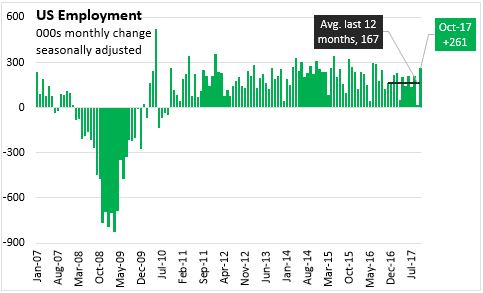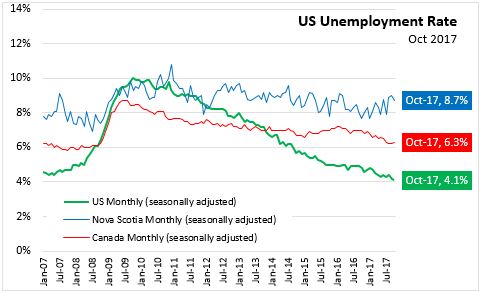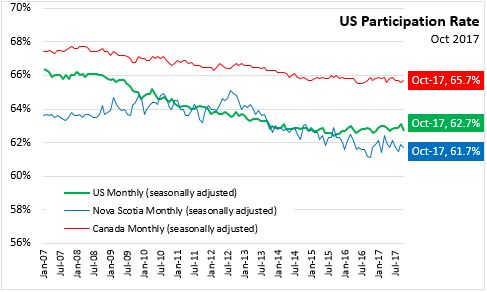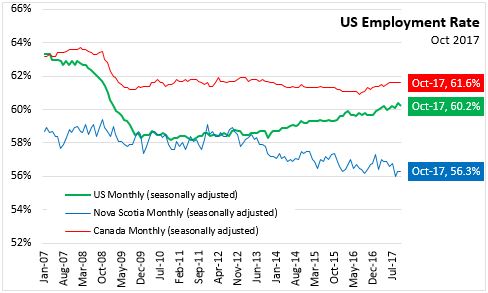The Economics and Statistics Division maintains archives of previous publications for accountability purposes, but makes no updates to keep these documents current with the latest data revisions from Statistics Canada. As a result, information in older documents may not be accurate. Please exercise caution when referring to older documents. For the latest information and historical data, please contact the individual listed to the right.
<--- Return to Archive
For additional information relating to this article, please contact:
November 03, 2017US EMPLOYMENT, OCTOBER 2017 The US Bureau of Labor Statistics reported a gain of 261,000 positions in non-farm payroll employment for October. This follows on the revised gain of just 18,000 in September as many employer establishments in the Southern US were affected by hurricanes. Results for September were revised up from a decline of 33,000. Employment gains were concentrated in food services (+89,000 rebounding from a hurricane-related decline in September), professional/business services (+50,000), manufacturing (+24,000) and health care (+22,000). Most other sectors reported little change in employment, including: mining, construction, wholesale, retail, transportation, information, finance and government.

The US unemployment rate declined marginally to 4.1 per cent for October on a drop of 765,000 in the US labour force. The US unemployment rate has been trending consistently downward since economic recovery began in 2010. It now stands at levels below those observed prior to the recession of 2007-2009. The spread between US, Canada and Nova Scotia unemployment rates is also similar to what was observed 10 years ago.

The decline in the labour force resulted in a 0.4 percentage point reduction in the US participation rate to 62.7 per cent while the US employment rate was down by 0.2 percentage points to 60.2 per cent. The reversals in US participation and employment rates were only observed in the latest month and may not constitute a break in the multi-year trend.
The US participation rate has stabilized after a decline of about 3 percentage points in the aftermath of the recession. Participation rates have trended down from pre-recession levels in Canada and in Nova Scotia as well.

US employment rates have been trending up slowly since 2014. After the recession of 2007-2009, employment rates in both Canada and the US fell to below pre-recession levels and have yet to recover. In contrast, Nova Scotia employment rates remained relatively stable during the 2007-2009 recession, but started to decline when the labour force started dropping in 2013.

Note: NS and US labour force statistics refer to different working-age cohorts.
Source: US Bureau of Labor Statistics, Statistics Canada CANSIM table 282-0087
<--- Return to Archive